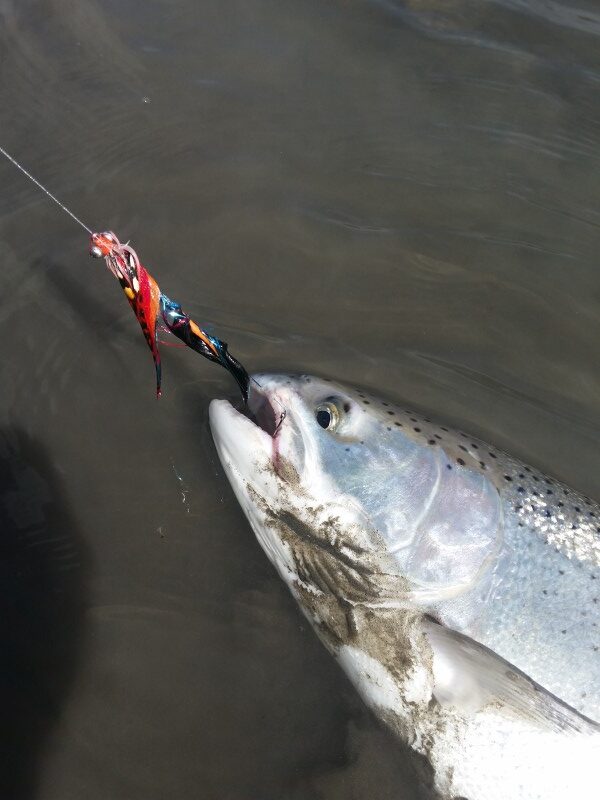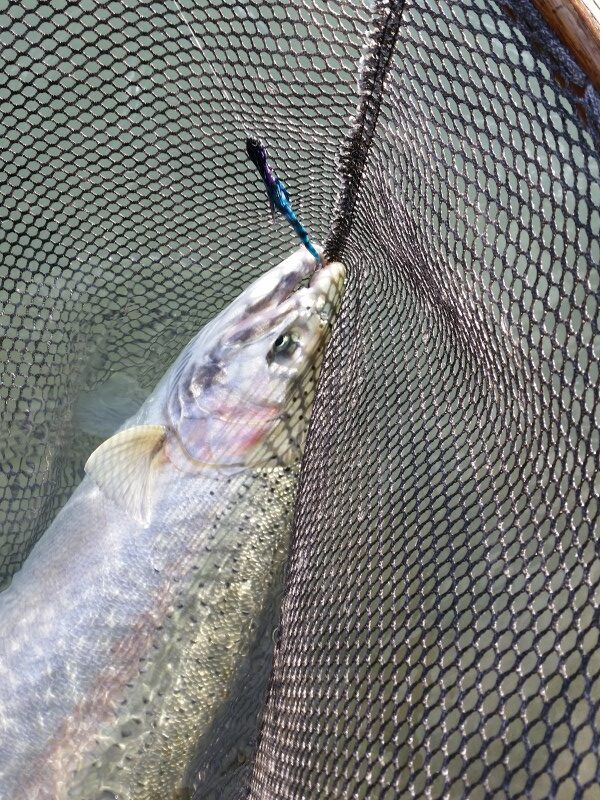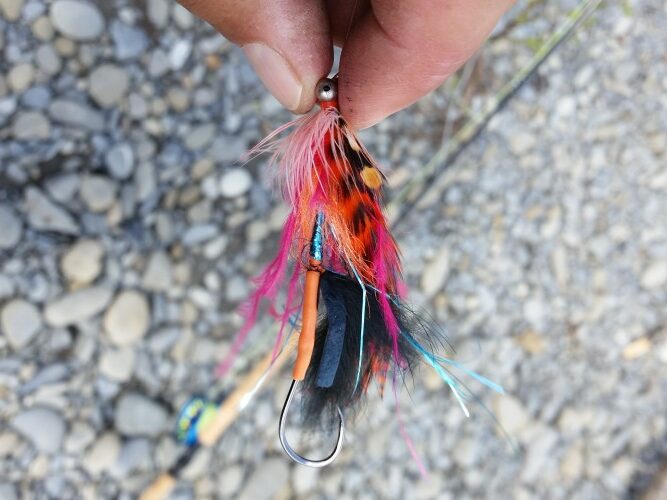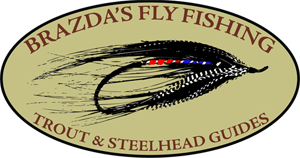As we progress or gain experience in reality we learn things that are only discovered with LOTS of time on the water. Some in business call it the 10,000 hour thresh hold. There comes a point in experience that many thing become second nature. In the fishermen guiding field its as simple as effortlessly dodging rocks on a rapid, seeing and fishing current seams un noticed by most others or when to dip the net and when not to. All these things take time and understanding. Many go unshared or even un noticed by others.
The other and most important aspect in experience is Responsibility. We as guides are responsible for the safety our guests, there enjoyment on the water and sometimes there effectiveness in catching the quarry.

But what I feel the need to SHARE with you is the responsibility we have as guides and all anglers alike the care of our sought after prize. It used to be that just the style of angling was often considered and effective tool in lowering our effect OF angling on Salmon Trout and Steelhead. I choose these as there in the hot bed of topic and also what I know about the most.
We as anglers really don’t know how effective other styles are unless we have done that or experienced that. Many guides have never swung a fly for steelhead, many others have never floated jigs or hung bait under floats or experienced plunking. But we find it so common for the general fishing public to assume what is happening in a day on the water with alternate methods.
At this juncture we can say the most common problem with the management of our iconic species is KILLING them. Plain and simple, we don’t want to kill the ones that are least in volume or the ones we cherish the most. This post wont be about tribal issues or WDFW management issues but may touch hatchery use later on. Its about what we can do with unwritten law
“Personal Knowledge” just has been adopted since the mid 80’s with C and R .

Its about how we rig our fly, lure, attractor, yarn, bead or what ever you wish to call it.
Regulation has taken a giant step in some parts of our steelhead world to removing bait, any Kill of wild fish and a reduction in Boat fishing water on the beloved Hoh River. These new reg’s have a lot of variance but for the sake of longevity in the post Ill leave it at this.
These regulations I know will dramatically increase the pressure by spey anglers in certain areas and increase the boat pressure in others. It will effectively force angler to fish alike or not at all.

This brings me to my point. Rigging a swung fly to reduce hook mortality; from experience a swung fly will result in a higher percentage of mortally hooked fish if its done incorrectly. There “the cats out of the bag”, you can now begin to hate upon me. But wait there is more, through out my fly fishing career the swung fly has been very dear to my heart, I consider it the finest way to catch a steelhead. I love it in every way except one, a higher percentage of bleeding fish than nymphing.
Let me add some particulars: A dry line swung fish that comes up to the surface seems to nip at the fly more often, we commonly use a loop drop to give them the fly. They rarely get hooked anywhere but the corner of the jaw, perfectly as designed. Possibly by accident as many classic hair wing flies actually ride sideways and therefore reduce the tong hook. On the other hand a skated fly hanging over a fish has resulted in a tong hooking , with the fly on the hook and point down, that is a key mistake by the angler. The design of a skater is often to have the hook pointing down.

A deeply swung fly on a sink tip without regard to hook point direction will commonly hook a steelhead in the tong and may bleed out. The absolute worst is a downward hook point on a hook shank, much like our for fathers and the very fly I chose for my logo. The Key factor here is the directional hook point. Ties directional patterns is not that tough. Three things to keep in mind are hook eye direction, weight placement and trailing hook attachment. OPST has designed a shank – hook – junction tube that works pretty well. I have been using the trailing wire and this seems to remain solid and will not rotate during use like the OPST. Those that tie on tubes have the rotation issue at times as well. With both a consistent management of rigging is crucial.

I have been experimenting with a long drop back on the hook point and have very good success so far.
This brings me to my comparison in angling styles as a responsible guide fulfilling my guests needs and the desire to protect my favorite fish from any possible harm.
When we fish the nymph rig we are almost as effective as one can be with a fly rod given all situations combined. We have next to zero hook mortalities with our rigging style, that’s to say out of a full year of fishing in the last few years we have had no bleeders rigging with a drop back style rig like you see on the average bead rig. While we HAD about 1 in 5 be tong hooked before we adopted these mentioned rigging styles. That is HUGE and I feel it is VERY important to share this with the heavily increased spey angling we now see on our remaining sustained stocks of wild steelhead. It is a heartbreaking thing to work so hard catching an Iconic wild steelhead and to see that little puff of red as it nears the beach. I for one hope that this can save some of you from ever experiencing that.
I have mentioned this to a few anglers in passing and of course to all of my guests of recent years. It sometimes falls on def ears and in worst cases is taken as a negative opinion on swinging for steelhead. I can only hope you will heed this and work on improving your ecological footprint in the years to come.
Thanks for subscribing, Jeff Brazda.
